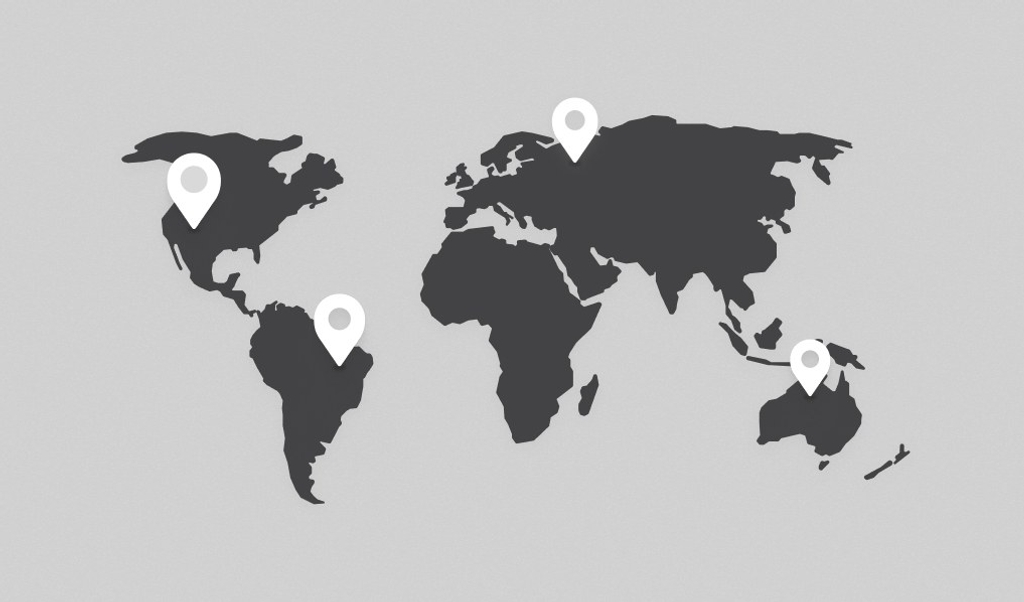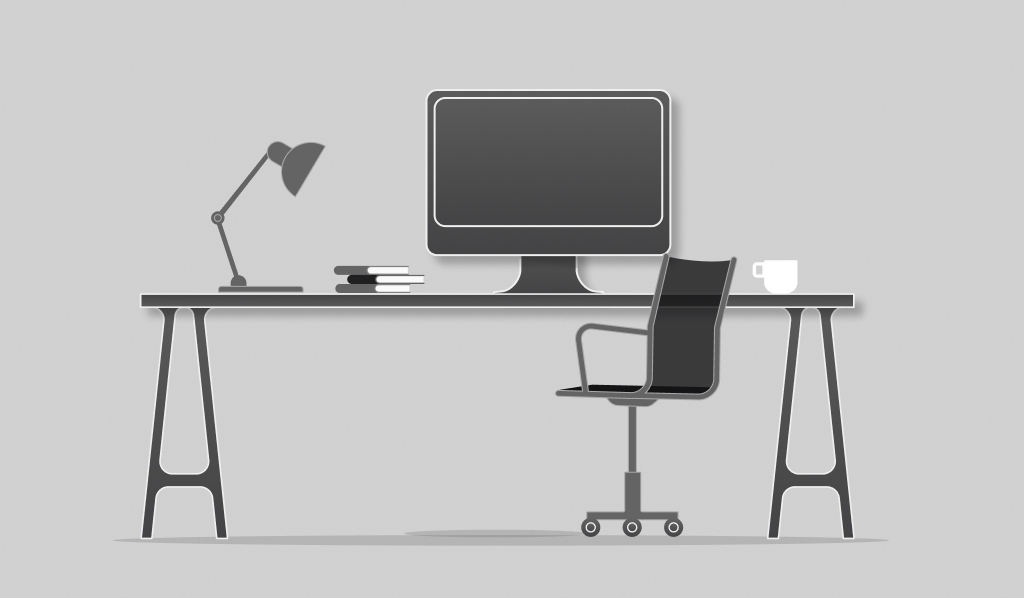
Look around your desk; what do you see on your desk, table, or side table? With a fully remote team worldwide, I don’t get to see what’s on my coworkers’ desks while on my way to a meeting or the kitchen in a traditional office. It’s one way to spark a conversation while in-office with someone you may not commonly work with. However, when remote, you may never get a glimpse of someone’s desk, even with a video call.
Fingerprint is a remote company, our “offices” are located in more than 20 countries, and each one is unique to the team member that works from it. There are several amazing benefits to working remotely, and I documented a few of them in a recent article.
But, I still wanted to know what my coworkers keep on their desks or in their offices. So, I asked them on Slack through a poll what their top five must-haves for their WFH (work-from-home) setups were, and they responded!
First, let’s get a quick look into real-life Work-From-Home desks from some Fingerprint team members.
Our Real Home Office Setups
Tyler K., a Business Development Representative, based in The Woodlands, Texas, USA, shares his multi-monitor desk and office setup. With a guitar for mental breaks.
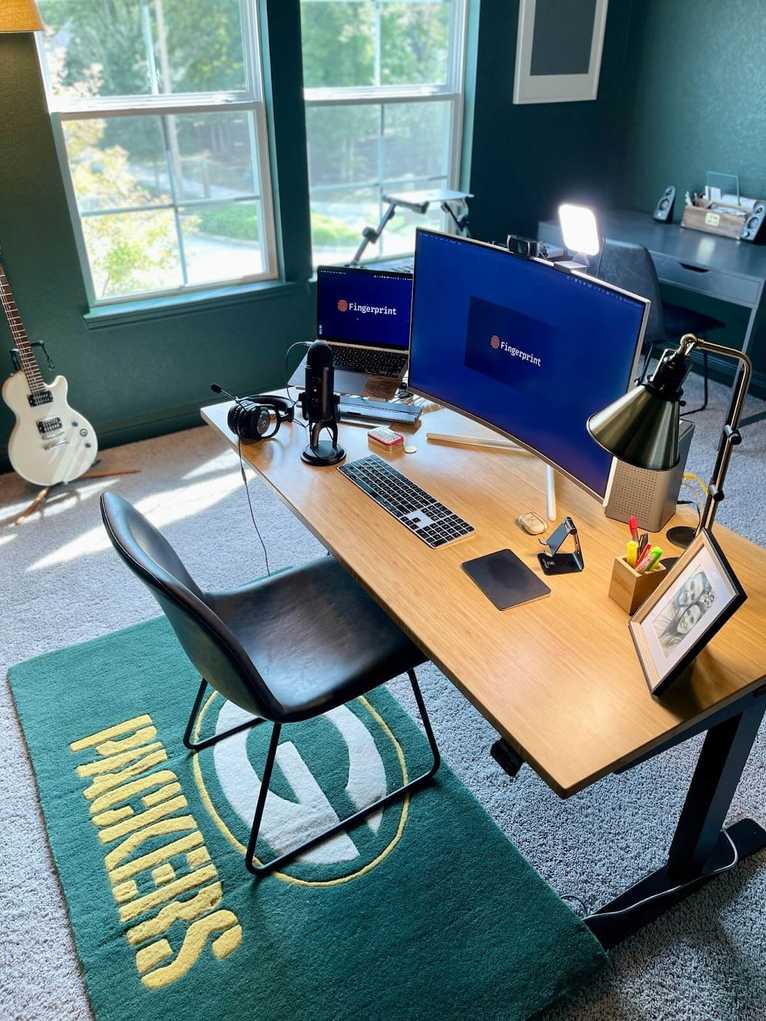
Mariam M. - Test Engineer located in Cairo, Egypt, shares her daily desk setup!
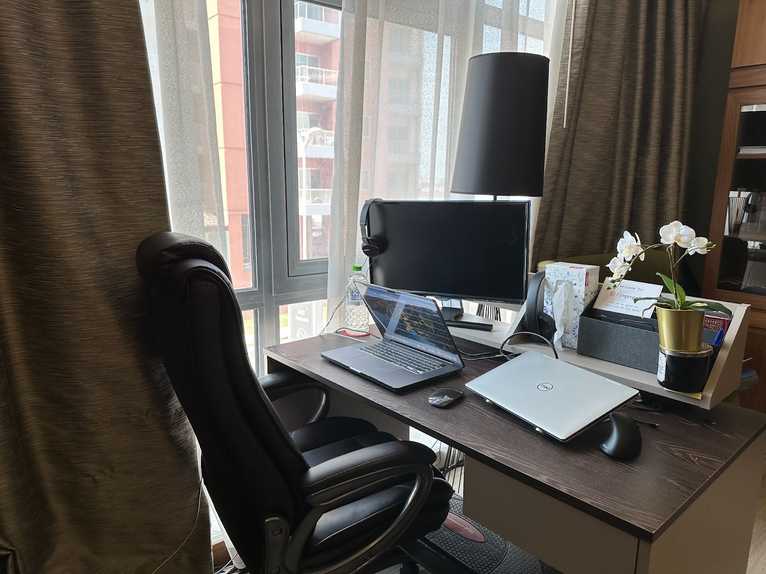
Darren A., a Product Designer based in the UK, optimized most monitors for optimal screen organization.
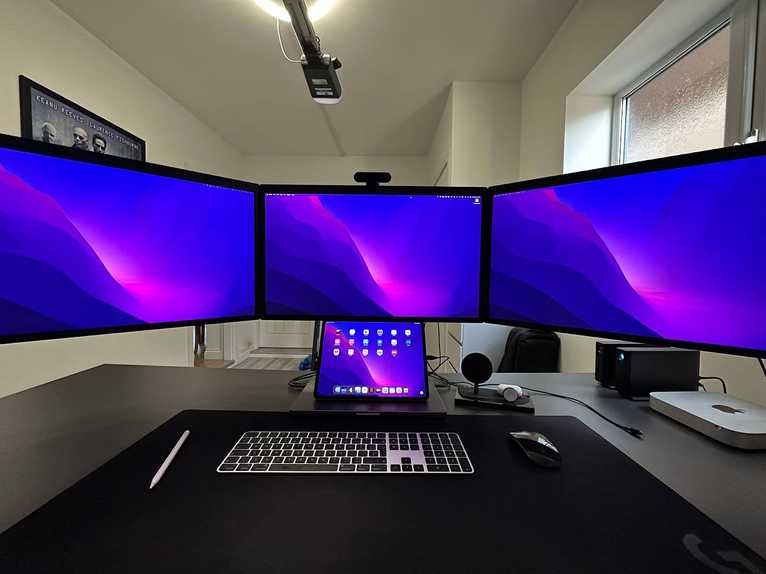
Our Top 5 Work-From-Home Essentials:
Here’s what the Fingerprint team voted as the most needed items in their remote work lives. If you’re an employer, you can consider offering an office supplies stipend annually or once during onboarding for employees to help offset the ongoing costs of maintaining a home office. We offer one here at Fingerprint, which has been extremely well received across the company.
1. Fast Internet
No one likes unreliable internet that turns a video call into an 8-Bit video game. It can cause disruption, delays, and miscommunication. So ensuring you have optimal internet access is crucial when working from home.
Here are a couple of tips for at home and while traveling:
- Do your research and shop for the fastest internet available in your area. Several sites exist to help you find all available internet providers, including BroadbandNow, which allows you to search by zip code for the most local options.
- Get a hotspot through your internet or cell service provider while traveling to help bridge the gap between hotel wifi, office wifi, and internet cafes. Confirm with your employer any security procedures for accessing unsecured internet spots while traveling.
2. Headphones
Whether it’s to cancel noise or to play their favorite song in higher quality, headphones are a necessity in our remote offices. Inc. even calls a good pair of headphones “the most important piece of tech” working at home. Headphones can improve the overall quality of a conference call for you and your attendees, especially if you have a more noisy background; you can isolate the environment noise to provide a more transparent, more focused call.
3. Coffee & Tea & More
We may be located all over the world, but we can all agree that coffee and tea are a must-have for working remotely. From Dunkin’ here in the US to Nespresso to actual espresso machines, we love our coffee here.
Looking for a fun employee gift for your remote team members this year? Consider a coffee subscription, a tea subscription, or a gift card to a local or national coffee chain.
4. Collaboration Software
Without our collaboration software, we wouldn’t be a functional organization by utilizing solutions such as Slack, Notion, GitHub, Calendly, and more. We’re able to connect and collaborate anywhere and anytime. As we mentioned in a recent blog post, our team members join us from over 20 countries which means traditional methods of communication don’t always equal productivity.
We organize our collaboration software into three main categories:
-
Conversation & Conferencing Software: These are meant for real-time or short-term, low-stakes conversations. We use Slack, Google Meet, Loom and Zoom, most commonly across the organization, to make this happen via written or verbal communication.
Asynchronous communication doesn’t always need to mean written documentation. We bridge the meeting and async gaps with a software called Loom, which acts as a video capture device but instead of just recording action on a screen, it also includes a floating picture-in-picture of the person recording. It’s a great way to explain how-to do something while still being asynchronous. -
Collaboration & Documentation Software: This is how we organize, ideate, document, and iterate on our many, many, MANY projects across the organization. Notion is our gathering space for all our documentation, from company-wide down to social media posts.
Notion is our virtual office building - pick a “floor” from the Notion sidebar, and you can find specific departments, answer people operations questions, and more. It’s been crucial in new employee onboarding and ongoing employee education as we continue to grow our company. -
Automation Software: How can automation software be collaboration software? It can simplify communication which can typically be time-consuming. One classic example is trying to set up a meeting with someone, either internally or externally. It can be several emails, back and forth, sometimes more than a week, and take several days. However, an appointment scheduler like Calendly takes the guesswork out and can save lots of time when trying to schedule a time to meet with someone.
5. External Monitors
Having a second (or, in some cases, third & fourth) monitor can aid your organization and productivity. In addition, if you regularly present during conference calls, having a dedicated presentation screen can make it much easier to share and manage conference calls simultaneously. PCMag has a detailed list of the best monitors available to help you find the best one for your needs.
Lastly, visit our Careers page to learn more about our current career opportunities.
